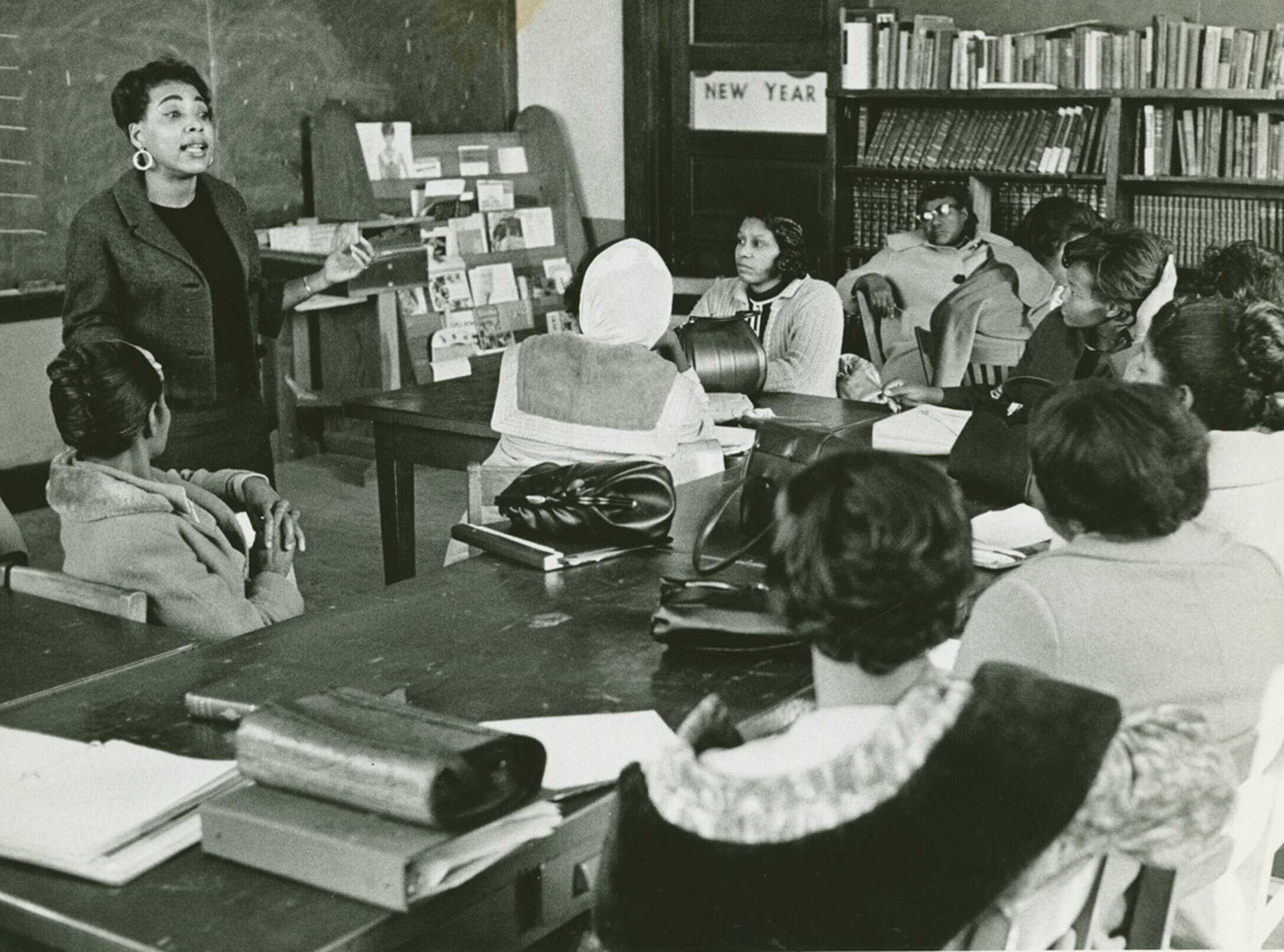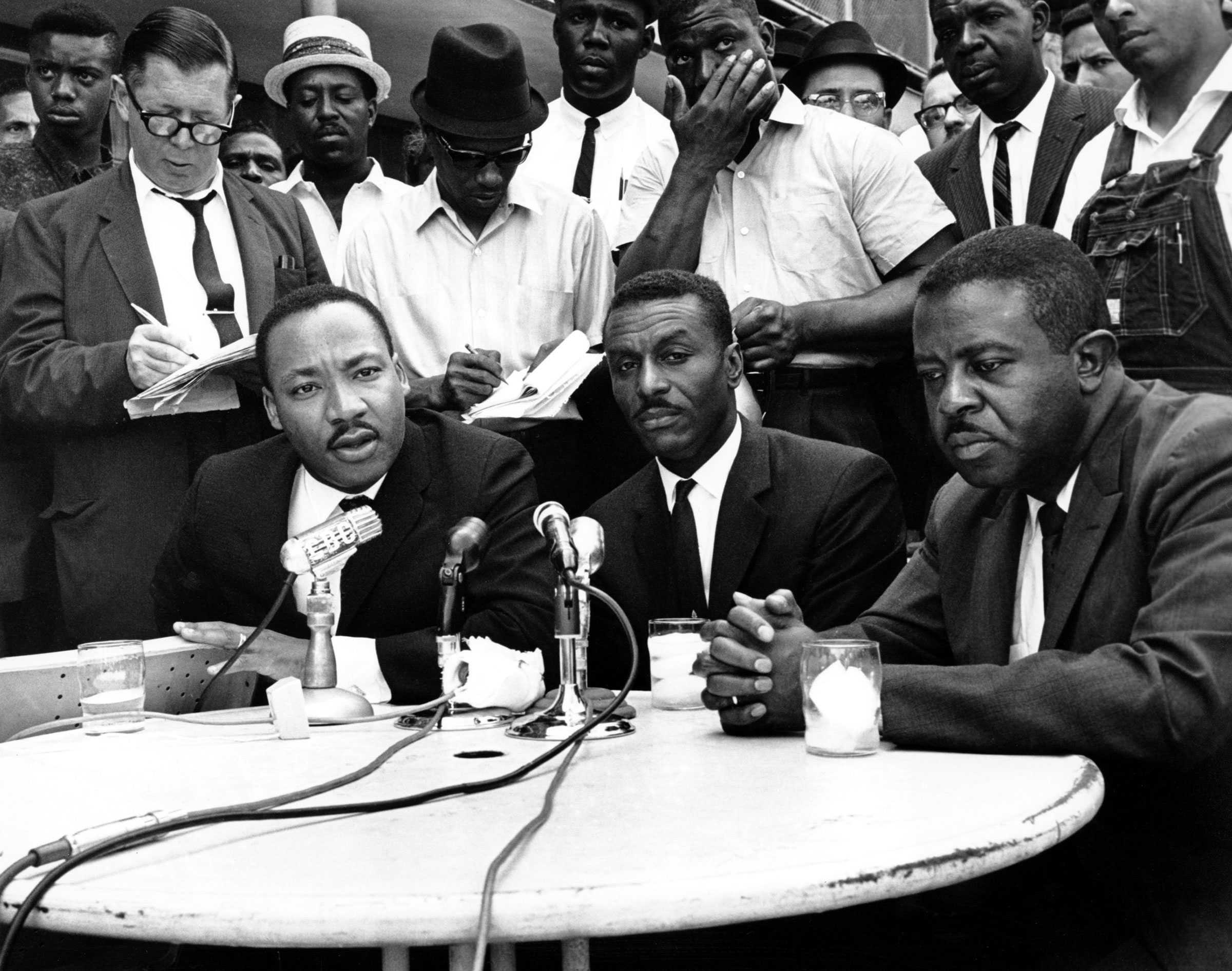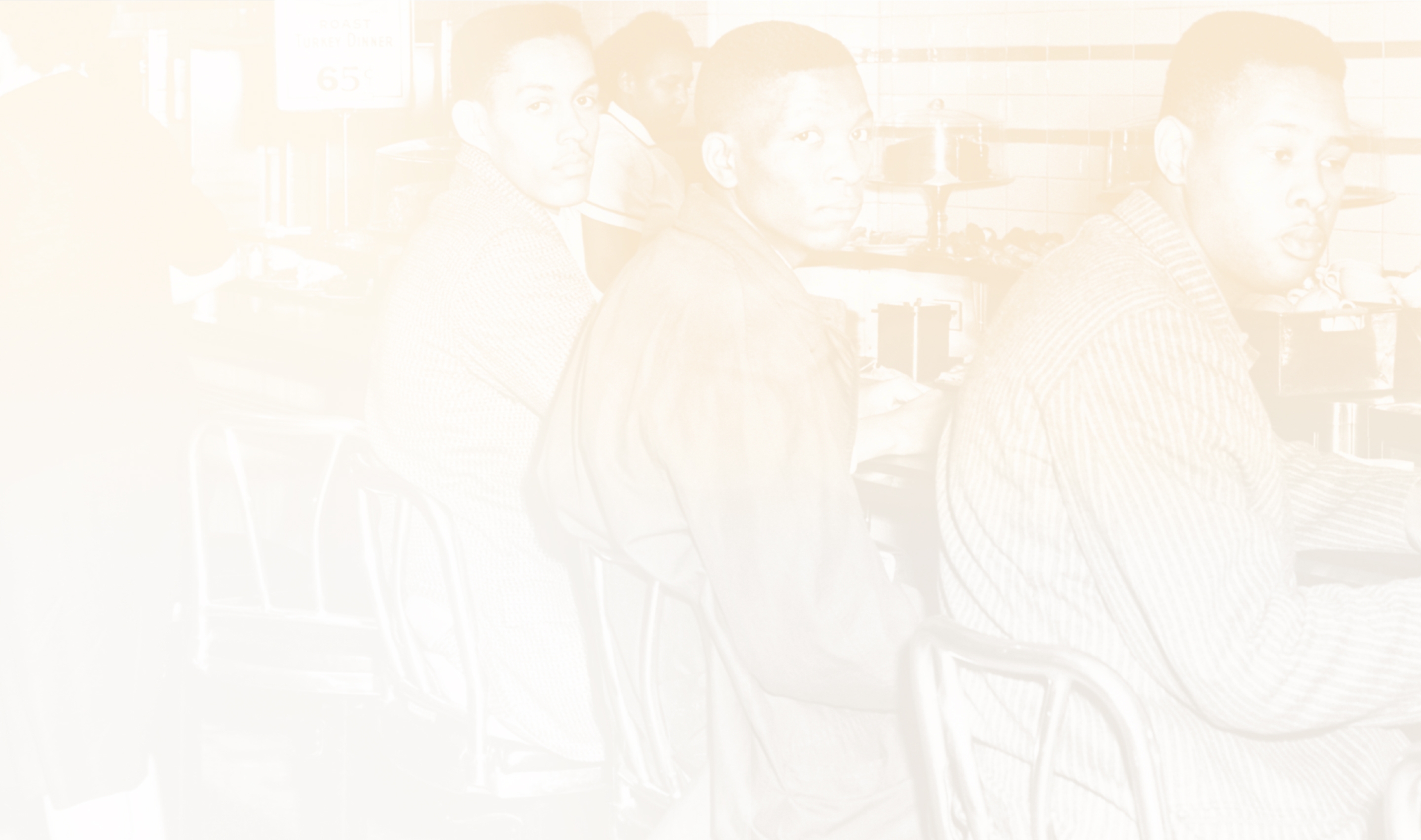
Chapter 3
Protesting and Marching for Civil Rights
African Americans resisted segregation through individual and collective action. Privately, they attended to their families, their communities, and their lives. Publicly, they boycotted, marched, and protested, forcing businesses and cities to desegregate.
Organizations such as the Southern Christian Leadership Conference (SCLC) and the Student Nonviolent Coordinating Committee (SNCC) provided training and funding for desegregation efforts.
Building on the Success in Montgomery
Martin Luther King Jr. at SCLC headquarters, Atlanta
After the success of the Montgomery Bus Boycott, southern civil rights leaders founded the Southern Christian Leadership Conference (SCLC) to plan and manage challenges to segregation. Under Martin Luther King Jr.’s leadership, the SCLC directed voter registration drives, hosted leadership trainings, and organized nonviolent protests. Their protests drew national attention and helped push the nation towards new civil rights legislation.
Founding the SCLC
Dr. Martin Luther King Jr., Rev. Fred Shuttlesworth, and Rev. Ralph Abernathy
Rev. Theodore J. Jemison
In January 1957, African American leaders assembled at Ralph Abernathy’s church in Atlanta to create a new civil rights organization. Abernathy had worked closely with King in Montgomery and had become one of his most trusted advisors. Most of the other participants were ministers who wanted to keep up the pressure for social change. Martin Luther King Jr. was elected as first president of the Southern Christian Leadership Conference (SCLC), with Abernathy as vice president.
The objective of SCLC was to be an interracial, nonpartisan organization committed to nonviolent change. As King became a national figure, the SCLC grew in importance and effectiveness.

Dedicating itself to justice, refusing to cooperate with evil, appealing to the conscience of man, and working for social change but always in a spirit of good will and non-violence.
SCLC Constitution, 1957
Nonviolence and Direct Action
SCLC Crusade for Voters affiliate at the March on Washington, 1963
Woolworth’s sit-in, Jackson, Mississippi, 1963
SCLC and other civil rights activists utilized the strategy of nonviolent direct action. As expressed by Martin Luther King Jr., the goal of nonviolence was to define specific issues and take action through boycotts, marches, and other protests in order to generate public attention.
King’s use of nonviolence was inspired by Mahatma Gandhi, who led campaigns of nonviolent resistance against British colonial rule in India. According to the King Center, King’s philosophy of nonviolence included the beliefs that “unearned, voluntary suffering for a just cause can educate and transform people and societies; nonviolence chooses love instead of hate; and nonviolence believes that the universe is on the side of justice.” This view underpinned civil rights activists’ responses to violence.
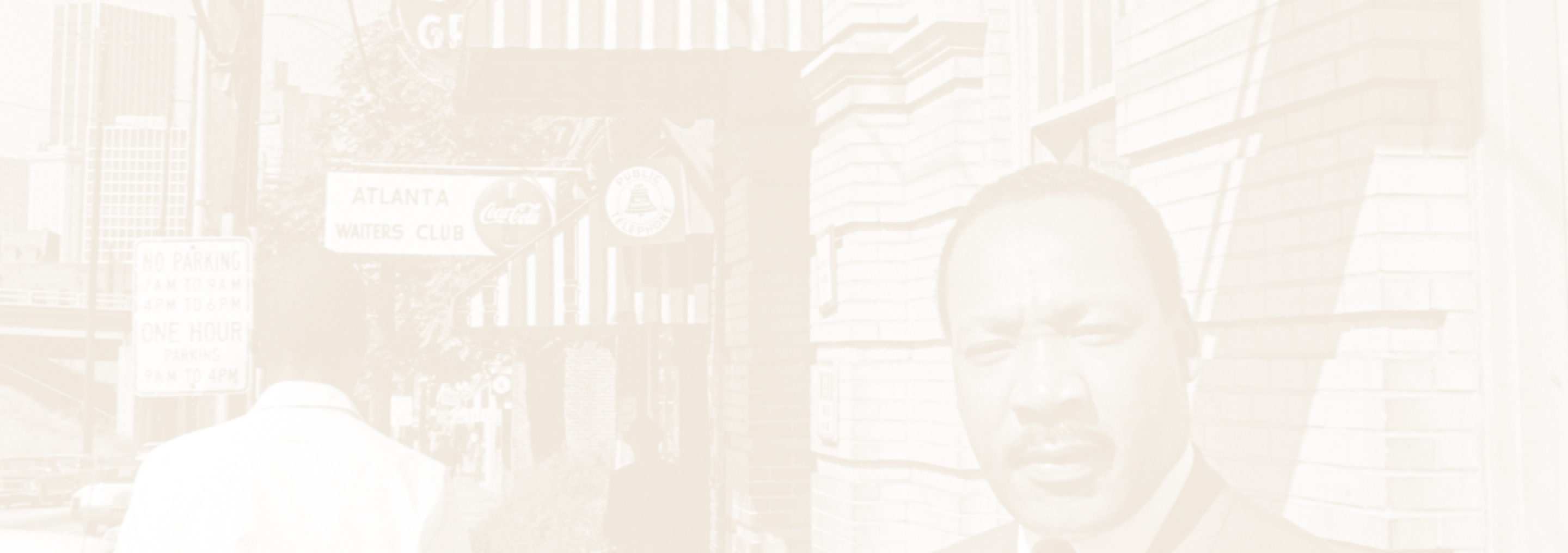
Nonviolent resistance is . . . based on the conviction that the universe is on the side of justice.
Martin Luther King Jr., 1958
Contrasting Strategies of the NAACP and SCLC
Rev. Andrew Young and SCLC field organizers strategize local voter registration campaign in Greenwood, Alabama
NAACP lawyers and staff
The Southern Christian Leadership Conference was formed to help coordinate the protest activities of local organizations using nonviolent direct action. The SCLC believed that by exposing injustices through public demonstrations, they could pressure local officials and business leaders to change.
In contrast, the NAACP believed challenging discriminatory laws through legal action was the most effective strategy for fighting racial injustice. While the two groups differed in their approach to creating change, both organizations sought to weaken segregation and secure civil rights for African Americans.
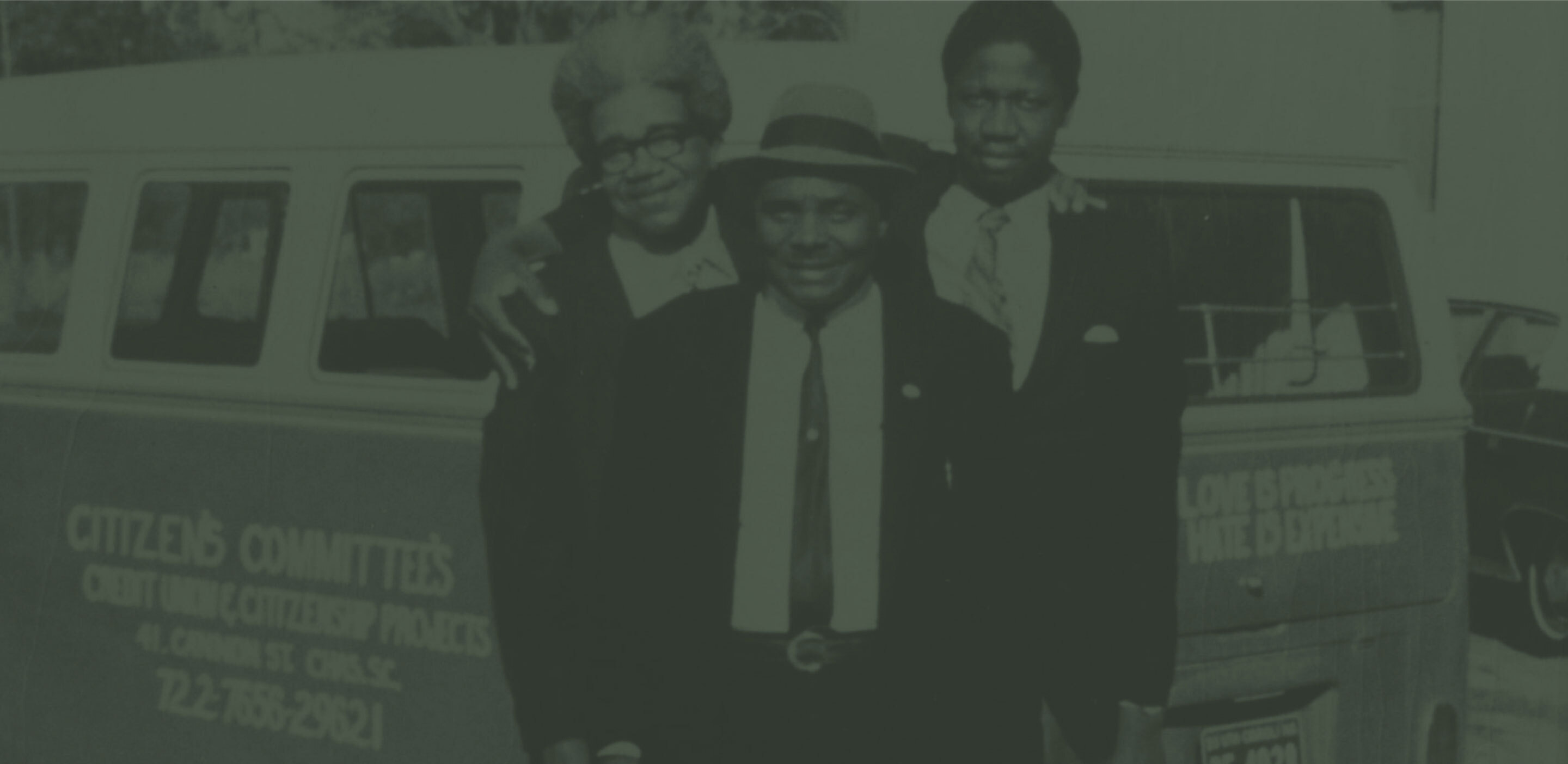
Esau Jenkins and the Progressive Club of Johns Island
Activist groups around the country were affiliated with the SCLC. The Progressive Club of Johns Island, South Carolina educated people about their voting rights, provided goods and services to the community and much more.
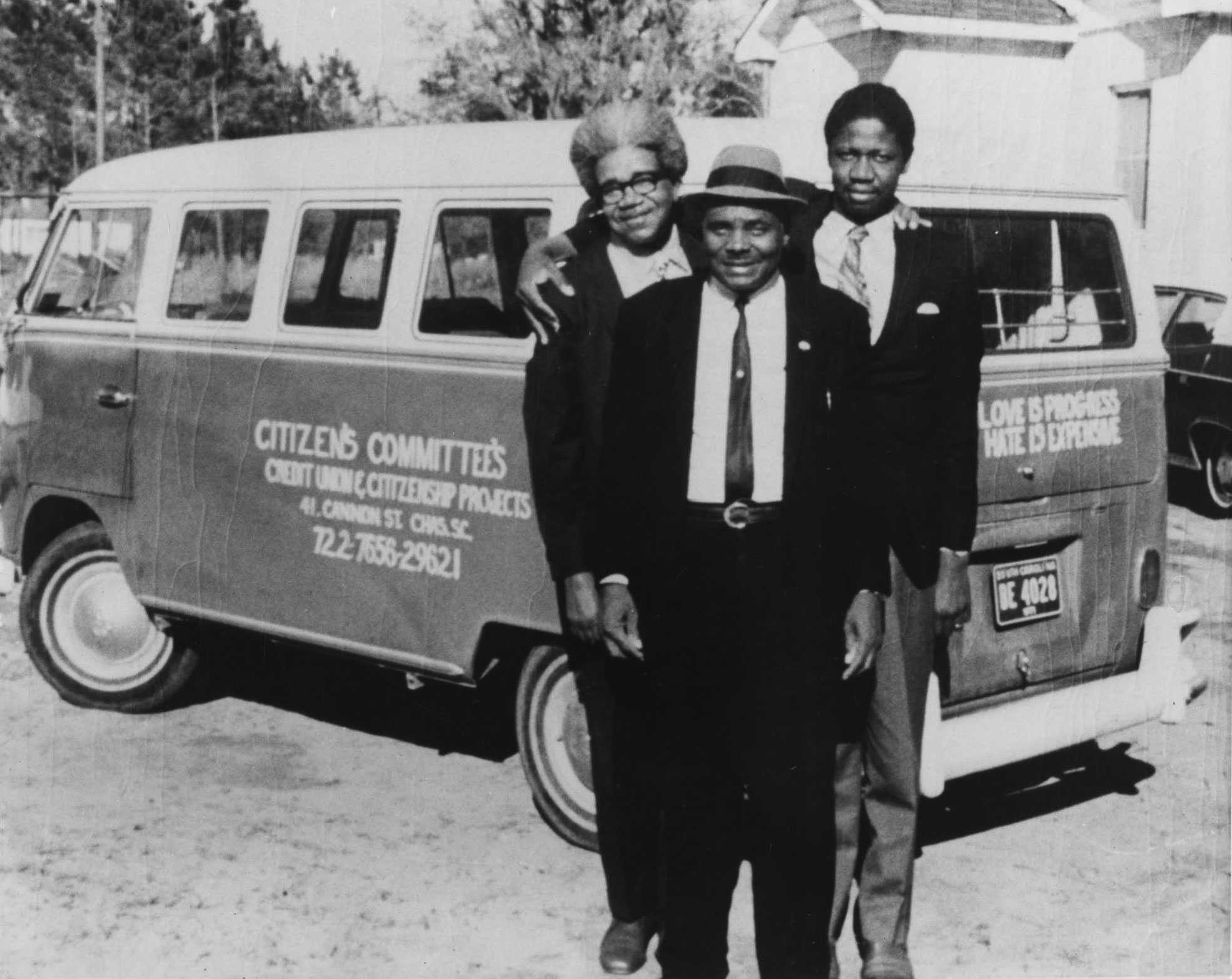

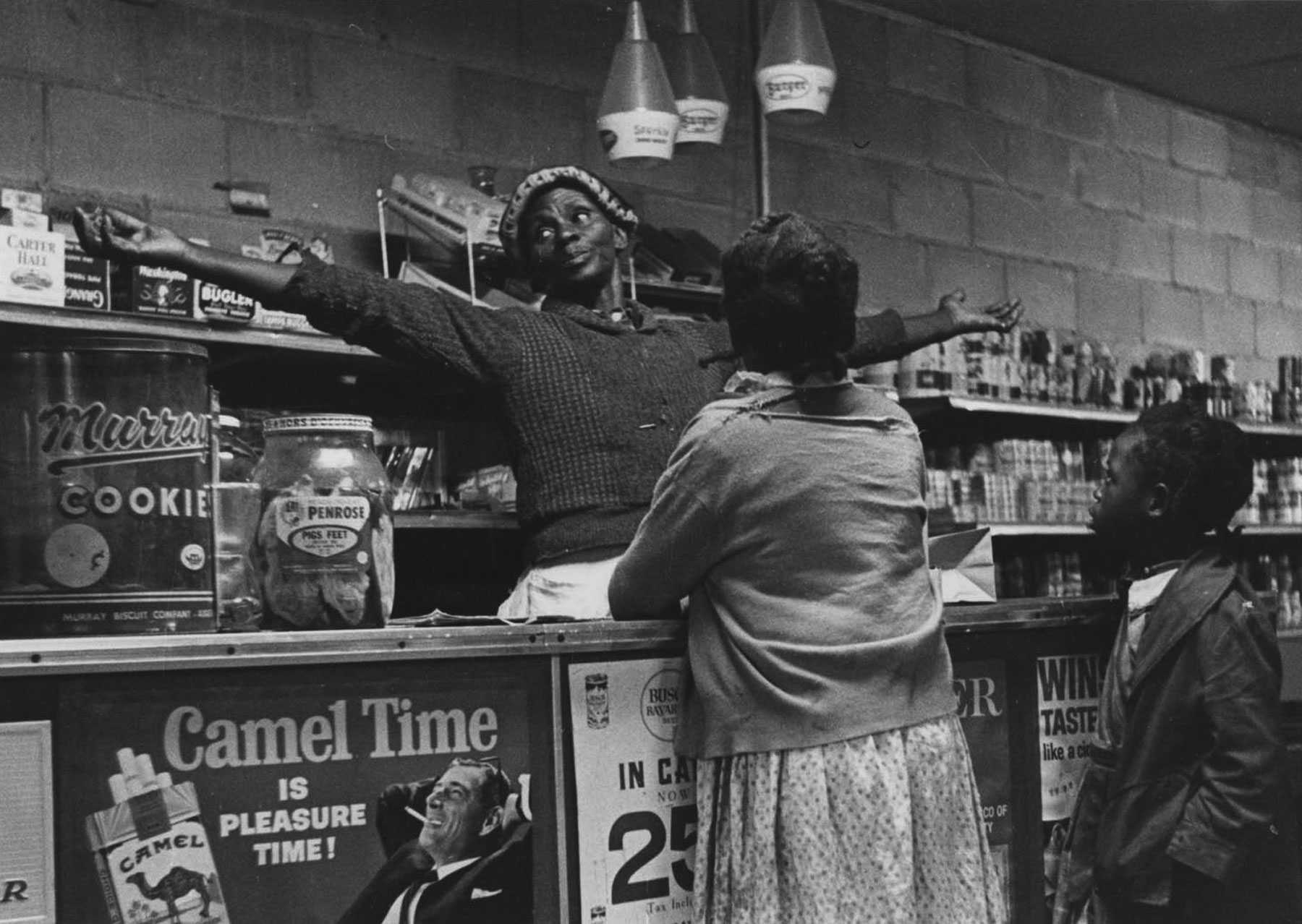
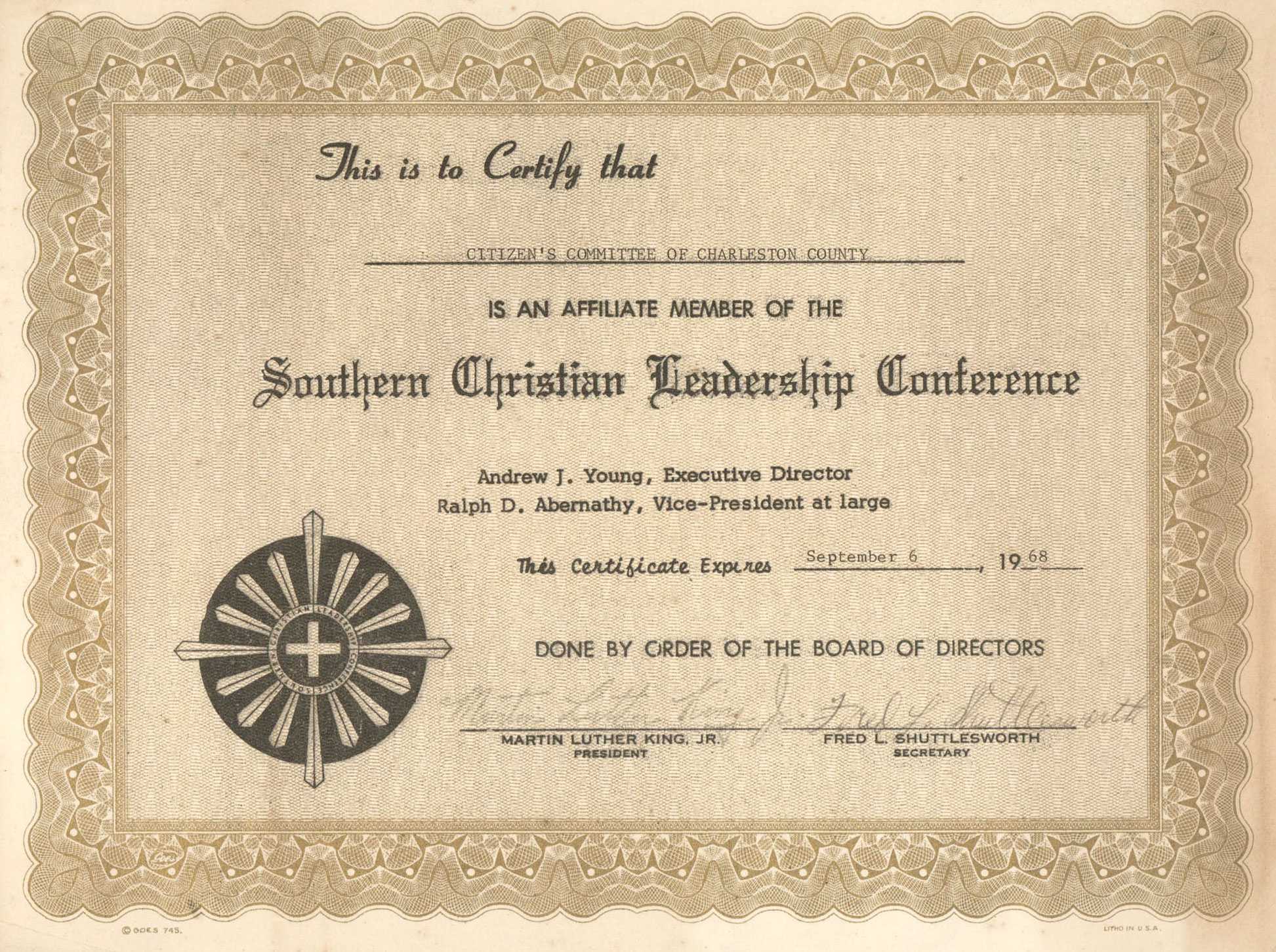

SCLC’s Later Activism
In the late 1960s and into the 1970s, the SCLC expanded its activism by seeking to end poverty, opposing the Vietnam War, and protesting Apartheid in South Africa. The SCLC is still active today.
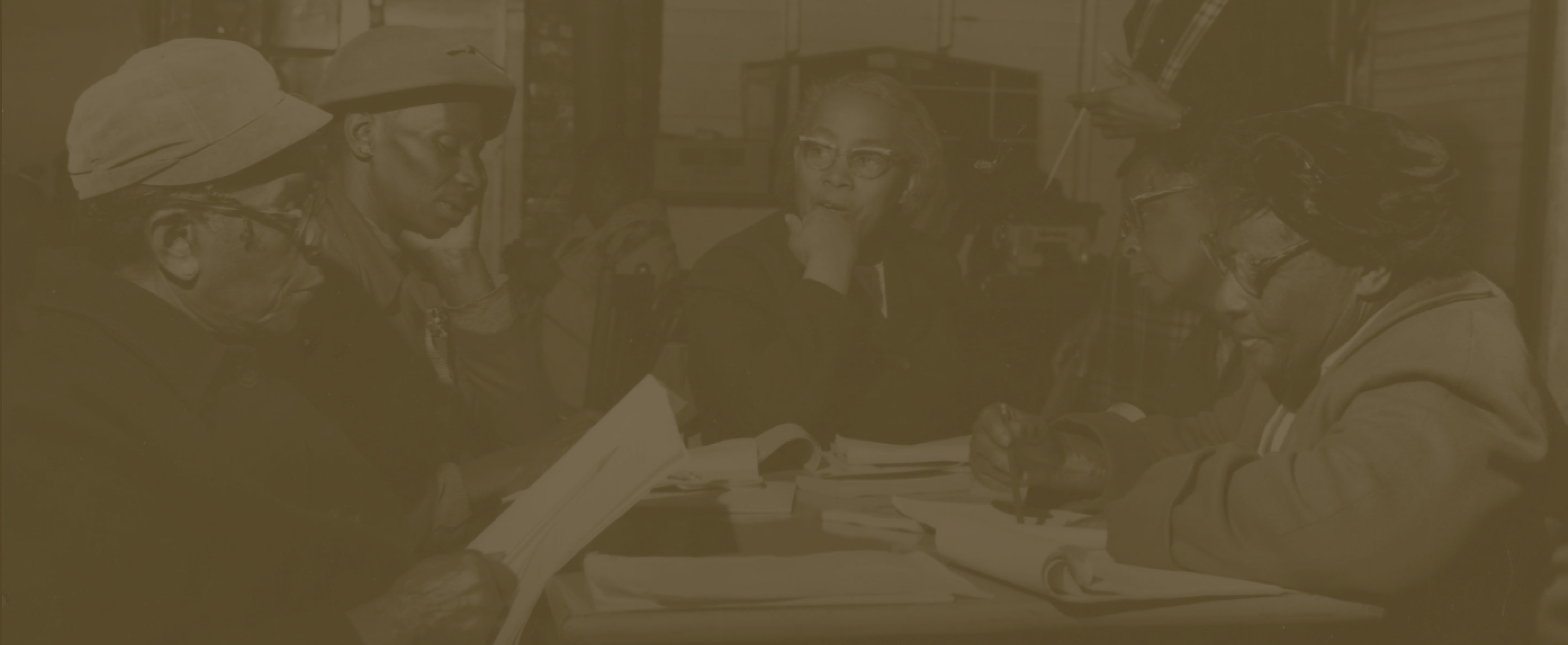
Citizenship Schools
Between 1957 and 1970, civil rights activist Septima Clark led the SCLC in establishing nearly 900 Citizenship Schools in the rural South. The goal of her grassroots educational campaign was to help African Americans pass literacy tests required for voter registration.
![A softback book titled: [Southern Christian Leadership Conference Citizenship Workbook]. The front cover is black with a white vertical block that runs down the proper right side from the top. The block contains the initials: [S / C / L / C] stacked in black. To the right of the block, the initials’ corresponding words are lined up in white type. Together they read: [SOUTHERN / CHRISTIAN / LEADERSHIP / CONFERENCE]. At the bottom of the cover, centered, white type reads: [Citizenship Workbook]. The interior pages, thirty-two in total, are off-white paper with black type and black-and-white images throughout. The inside of the front cover contains information about SCLC Leadership, Citizenship Education Program leadership, and Voter Registration Project leadership. An off-white tab is stuck between front cover and first interior page. The Foreword contains text from Dr. Martin Luther King, Jr. and a black-and-white image of Dr. King, Dr. C. O. Simpkins and Robert F. Kennedy. There is an envelope adhered between the last interior page and back cover. The back cover has a white rectangular box, centered, with black type that reads: [This book belongs to:]. The rest of the box contains fill in the blanks that include: [Name / Address / City County / State]. Handwritten in pencil in the "Name" blank is: [Kitt].](/static/d18239b52448157edb5ecbffa3b6679d/1e154/2012_132_001.png)
